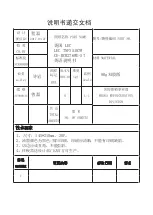
16
Cleaning
Defrosting
We recommend that defrosting should be carried out when the frost layer builds up to 10mm
(~0.39”). Choose a time when the stock of frozen food is low, follow these procedures:
1. Take out the food, turn the unit off at the mains supply and leave the door open. Ideally, the
frozen food should be put into another freezer. If this is not possible, wrap the food in several
sheets of newspaper or large towels and then a thick blanket to keep to keep it cool.
2. Place a shallow bowl or pan below the freezer compartment. Scrape away the frost using a
plastic scraper (not included). Defrosting the remaining frost can be speeded up by placing a
bowl of hot water inside the freezer compartment cabinet and closing the door. As the solid
frost loosens, scrape it away with the plastic scraper and remove.
3. When defrosting is complete, clean your unit’s interior and exterior.
Cleaning the Interior and the Exterior of the Unit
• Remove all the shelves, drawers and salad bin before cleaning. To
remove the salad bin first remove the lower fridge door shelf.
• Wipe the inside of the unit with a weak solution of bicarbonate
soda and then rinse with warm water using a ‘wrung-out’ sponge
or cloth. Wipe completely dry before replacing the shelves, drawers
and salad bin.
• Use a damp cloth to clean the exterior, and then wipe with a standard furniture polish. Make
sure that the doors are closed to avoid the polish getting on the magnetic door seals or
inside the fridge/freezer compartments.
• The grille of the condenser at the back of the unit and the adjacent components can be
vacuumed using a soft brush attachment.
Do not use a metal or sharp instrument to scrape away the frost, nor should you use any electrical
appliances to aid defrosting.





































